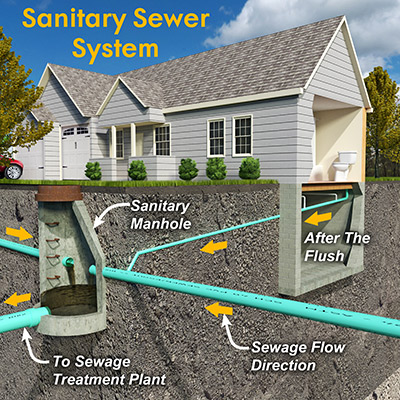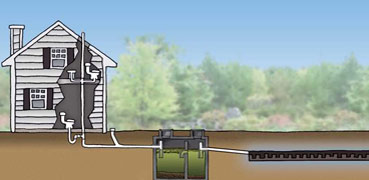
A mound septic system is an alternative to other septic tank systems. It rests near the top of the ground and does not use a container for the waste. This type of septic system disposes the waste through sand, and the ground will absorb the waste. The mound septic system has many good points and bad points. Below are the pros and cons of the mound septic system.
Protecting the Water Table
The purpose of a mound septic system is to keep the waste product away from the water table. The water table has to be maintained, and a damaged septic tank is a quick way to contaminate it. The mound septic system does a great job of protecting the water table and sometimes more so than other septic tank measures.
Economical
The mound septic system is easier to install than the other kinds of septic systems. The mound septic system is essentially a matter of excavating the area and installing pipes and filters. Other septic systems will involve casting concrete or metal to act as holding tanks. Once the holding tanks are filled, a professional needs to come out to empty it. This is not the case with a mound septic system, as the waste leaches into the sand. With the mound septic system, there are no costly repairs that you have to worry about. The ground merely needs to be turned over and then dug out again in order to reset the mound septic system.
The Mound
A mound septic system is very descriptive of what it actually is. Once a mound septic system is installed, you will be left with a mound of dirt that is easily seen by anyone looking at the area where it is placed. The mound can be as high as five feet. It is possible to landscape the mound but, in the end, you still have a mound to contend with.
Space Limitations
One main issue with having a mound septic system is the space needed to properly dispose of the waste. With other kinds of septic systems, a large container is placed underground and buried. It costs a great deal of money to install these systems, but they can be placed anywhere. A mound septic system has no container, and digging too far gets you too close to the water table. This means instead of digging down you have to dig out. This causes a problem because you need a larger space for the trench. This limits where you can place a mound septic system, let alone if you can even have one.
Smell
Most septic systems you will not know is there because they will not smell. There is a possibility that the normal septic system container can overflow, but it doesn't happen often. The mound septic system is placed near the surface, which means you are not far from the sewage. If the waste does not leach fast enough through the ground, it can find its way to the top.
For more information on septic system design, contact Morse Engineering and Construction.
Source: doityourself.com


